An early 16th century German woman’s jacket, typical of the lower class.
Although I had my Schaube for high class warmth and several practical Gollers, I wanted a warm layer that would work for early morning camp cooking and cold days, but not be too bulky to pack when travelling.

Research and Design
I spent some time looking at what early 16th century German middle class women did for warmth. The Zwickel Mantle was worn as a formal mantle for church going, and Drei Schnittbücher (Barich & McNeally 2015) describes the Schaübel – a short cloak worn by the well-off woman later in the 16th century. But none of these fitted the bill.
The answer for the middle class woman seemed to be: add another layer of dress, perhaps lined with fur – also not practical for what I needed! So in the end I went down-market and looked at what the Bauer (farmer) women wore.
Hans Sebald Beham’s woodcuts provided an abundance of short, semi-fitted jackets in several different styles. I debated the benefits of the different types – Type A (more middle class, warmer collar design) and Type B (farmer class, less warm collar, more practical for cooking over open fire) – and decided on the latter.
The next day, I did one more look through the woodcuts for a back view (is there a back seam or not?) and I found Type C, which is the best of both worlds. These examples are from Beham’s from his Great Country Fair woodcut (also called Village Fair).
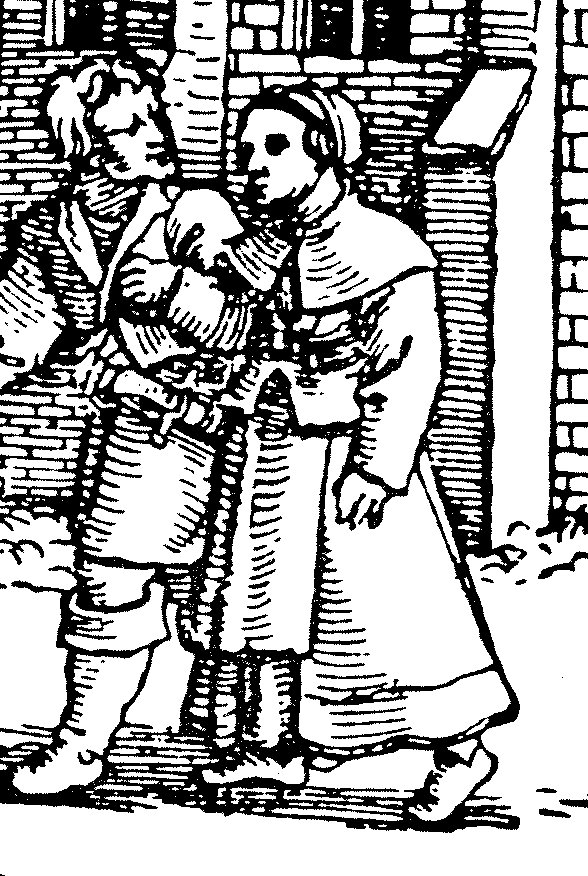
Source: Geisberg (1974)

Source: Geisberg (1974)
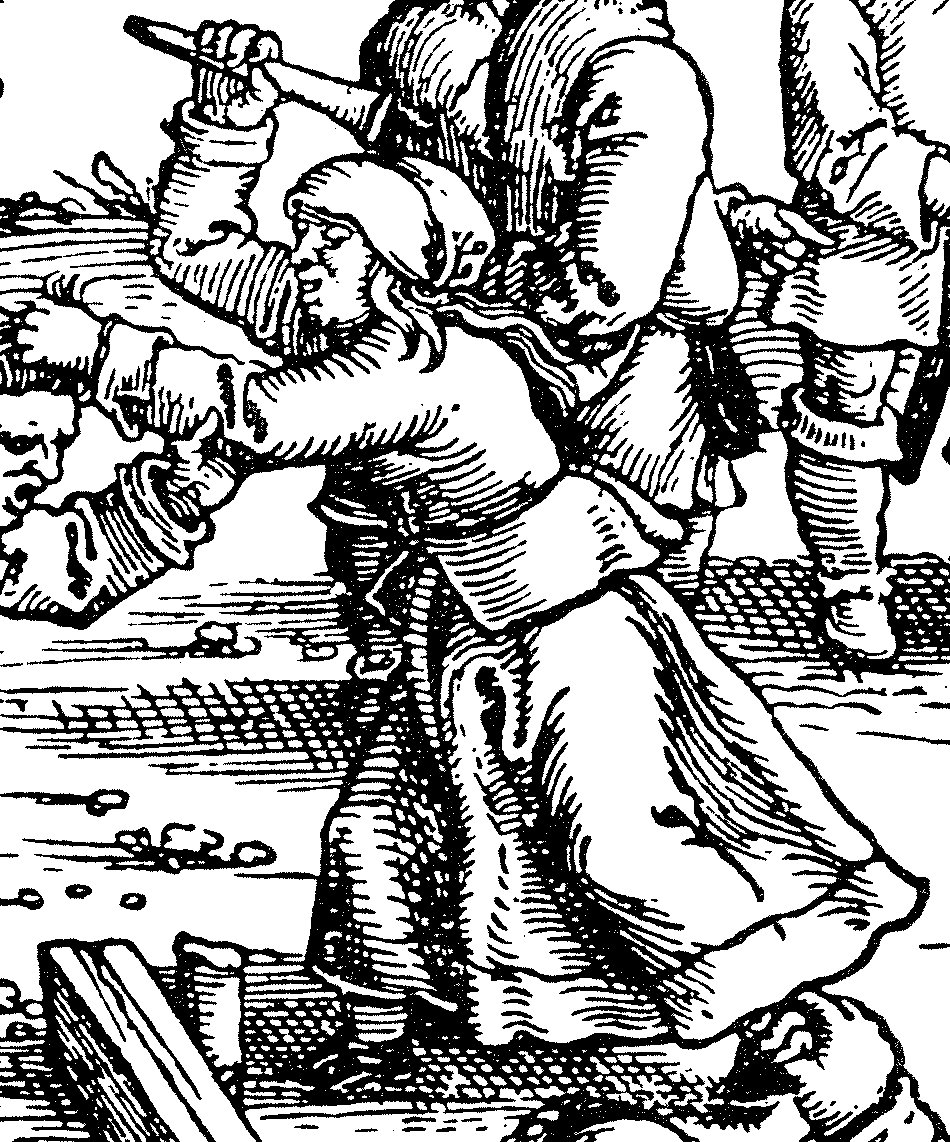
Source: Geisberg (1974)
These images show a semi-fitted jacket with a gestalt back collar and turned back revers (lapels), full skirt with open front and back pleats, long sleeves an optional turned cuff. From the folds, these jackets are made of a solid wool. Some examples (not shown here) have a fur lining, visible at the collar and cuffs.
I had some well-fulled forest green wool which was ideal for such a jacket. Rather than fur, I planned to line the cuffs and collar in black velveteen – a middle class choice (not quite congruent with the lower class jacket).
Construction
Since I would be wearing this over my middle class clothing, I had to wear all the layers – Hemd, Unterrock, Rock – in order to pattern myself. I wanted the jacket to fit, but with plenty of room to move and wide enough sleeves to go over my various wardrobe options.
I developed the pattern with reference to the Fraulein Lieb Rock (f.21r) in Drei Schnittbücher, but adapted to the earlier style of bodice. I also changed the curve of the skirts to create a flat front and pleated back. I went down a wrong path patterning the new collar and wasted 2 hours. Took a fresh look, had a working pattern 10 minutes later.


With the pattern complete, I cut the jacket bodice and sleeves from the green wool, canvas and linen. The skirt has no canvas interlining, so that it falls fluidly.
Although I doubt these jackets had much internal tailoring, I enjoy these skills, so I pad-stitched melton to the upper backs to shape the gestalt collar and to most of the front, to set the roll on the front reveres. I was on holidays, working on a small table, and failed to spot that I had made two right-hand fronts until I was well into the second side!
Some swearing, much unpicking…

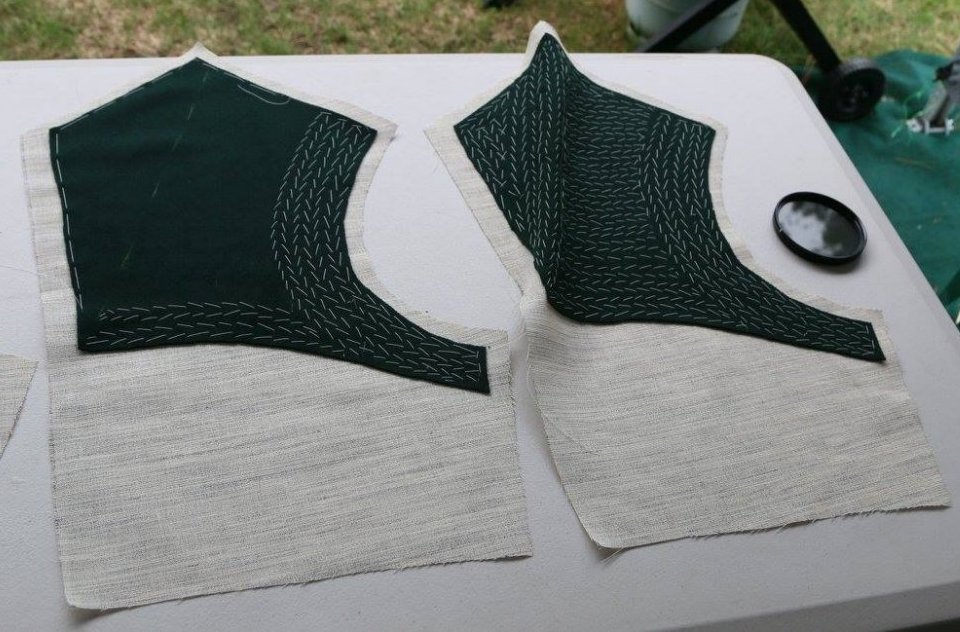
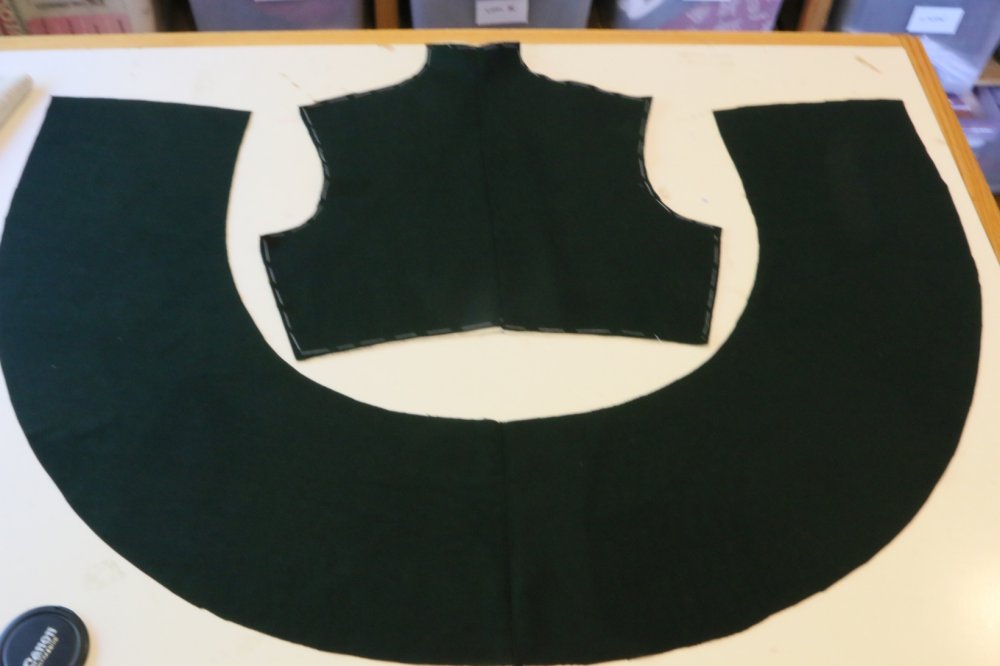
I sewed the skirts together, pick-stitched the seam flat and catch-stitched the hem at front and base, ready for lining. I sewed the bodice sections together and pick-stitched the seams flat, then sewed the shoulder seams the same way.
The same pattern could be adapted for the lining for the collar and revers. I cut the velveteen and sewed the back seam, then sewed this to the bodice. I basted in the back lining and sewed 3 sets of solid brass hooks and eyes down the front.



I lined the skirts, hand-slipping all around and basting the top, then sewed these to the waist seam, with a centre inverted pleat and two side pleats. I oversewed the waist seam to the bodice canvas to flatten the seam, then finished lining the bodice.
I constructed the sleeves, basting the wool to the canvas, seaming, pick-stitching and lining. The base of the cuff lining is also velveteen, which shows when the cuff is turned back. I inserted the sleeves and then covered the seam with a strip of linen to reduce wear.

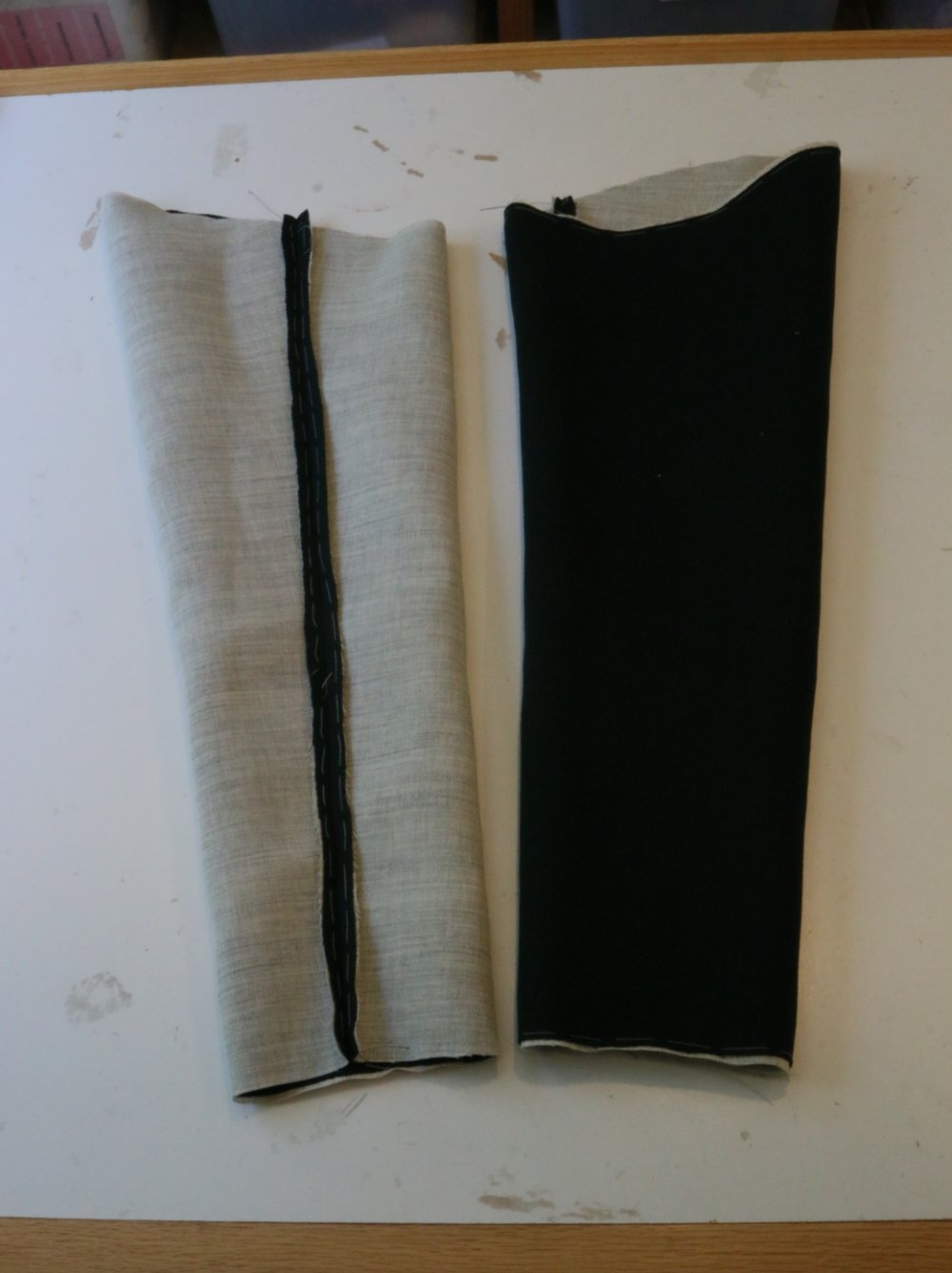
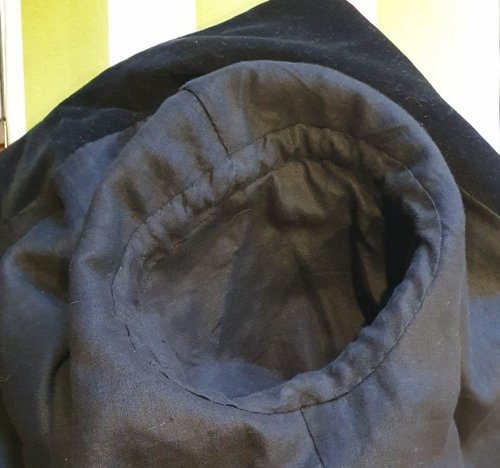
I was very pleased with the jacket – it fits well over my other clothing, the back folds kick out just like the woodcut, and the revers lie beautifully flat. It’s easy to wear and very practical for camp cooking and cold weather.
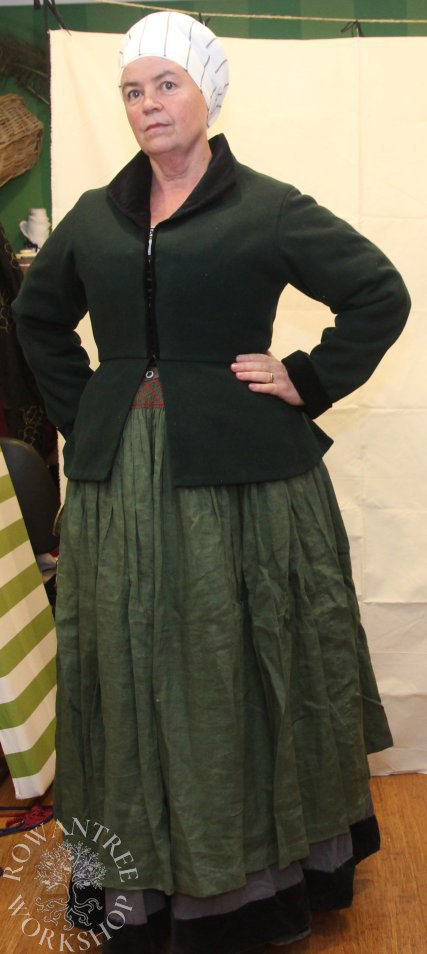


Afterthoughts
The problem with doing more research is that you learn more – your perspective changes.
In this case, I’m becoming convinced this really is a farmwife jacket – and therefore not really suitable for my middle class wardrobe. Drei Schnittbücher notes a reference to an Grosgrün (wool and/or silk cloth with thick wefts) example in a Burgher class inventory, but it is not something we see commonly depicted in art from the time.
So perhaps I need to make a lower class outfit, or a more appropriate middle class ‘warm layer. Or both… But in the meantime, it is a useful and comfortable garment.

